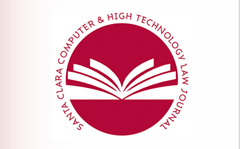Abstract
Patent law is presently under-theorized. Patents are granted to serve as rewards for certain types of inventive successes, but the nature of the successes to be rewarded, the circumstances that should trigger rewards, and the size of the rewards that will best serve the public remain in substantial dispute. One of the primary reasons for these uncertainties is the incompleteness of underlying theories explaining why patented inventions deserve special treatment and rewards. The lack of good understanding of the theoretical justifications for patent rewards (and the limitations of those justifications) means that patent law standards are being reconsidered and revised without a clear sense of patent law goals. If we do not know where we are trying to go in setting patent standards, how can we know how to proceed?
This article seeks to overcome these limitations on present analyses of patent policies and standards. The article attempts to better define the innovation reward goals of patent laws and to set directions for future thinking about a variety of patent law standards. It describes a model of patent rewards based on Harold Demsetz’s analyses of property controls limiting access to public goods. The article argues that patented invention designs should be limited to excludable designs for which workable access controls and access payment systems are feasible. Access to these sorts of inventions—as with other types of excludable public goods—should be regulated and controlled by patent rights to attract resources to the production of patentable inventions and to ensure that these inventions are produced at socially desirable levels.
The article considers the merit of providing patent rewards conforming to this model. It also considers at what points the model breaks down and under what circumstances patent rights should be withheld accordingly. By considering both the justifications for strong patent rewards and the limitations of those justifications, the contours of desirable patent standards in several areas of patent law become clearer. The concluding section of this article offers preliminary thoughts on how the model developed here can be used to shape several important patent law standards.
Recommended Citation
Richard S. Gruner,
Why We Need a Strong Patent System and When: Filling the Void Left by the Bilski Case,
28 Santa Clara High Tech. L.J. 499
(2012).
Available at: https://digitalcommons.law.scu.edu/chtlj/vol28/iss3/2
